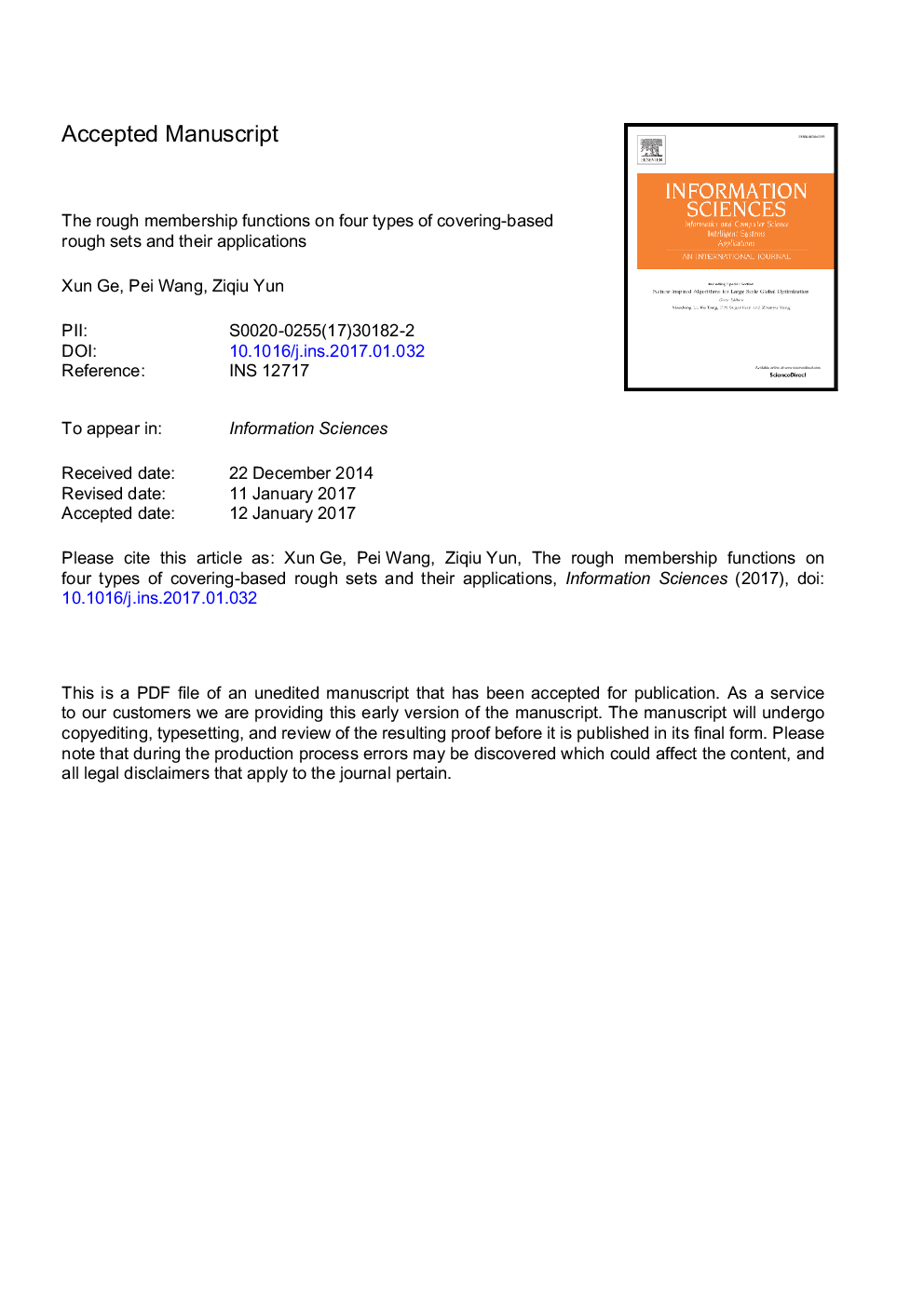| Article ID | Journal | Published Year | Pages | File Type |
|---|---|---|---|---|
| 4944564 | Information Sciences | 2017 | 19 Pages |
Abstract
Pawlak's rough membership functions not only give numerical characterizations of Pawlak's rough set approximations, but also establishes the relationships between Pawlak's rough sets and fuzzy sets or probabilistic rough sets. However, it is noteworthy that Pawlak's rough membership functions have limitations when handling incomplete data that exist widely in the real world. As will be shown in this paper, one way to overcome this is to construct rough membership functions for covering-based rough sets. In this paper, we first use an example in evidence-based medicine to illustrate how to use Pawlak's rough membership function on numerically characterizing decisions under the circumstances where data are complete. Then, we construct covering-based rough membership functions for four types of covering-based rough sets which were examined by Zhu and Wang (in IEEE Transactions on Knowledge and Data Engineering 19(8)(2007) 1131-1144 and Information Sciences 201(2012) 80-92), and use them to characterize these covering-based rough sets numerically. Finally, we present theoretical backgrounds for these covering-based rough membership functions, and illustrate how to apply them on numerically characterizing decisions under the circumstances where data are incomplete.
Related Topics
Physical Sciences and Engineering
Computer Science
Artificial Intelligence
Authors
Xun Ge, Pei Wang, Ziqiu Yun,
